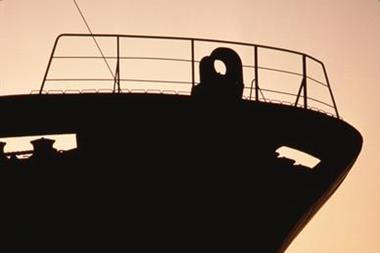This rapidly evolving market requires more and more from its claims experts
The world of loss adjusting has undergone radical change in recent years.
While the role still requires traditional core skills, such as supply chain management, and repair, renovation and loss estimates, the 21st century loss adjuster has to grapple with a host of new challenges as the market becomes increasingly competitive.
GAB Robbins chief executive Kieran Rigby says the profession has evolved greatly from its original model. “If you look back 15 years ago, everything was very much done on a transactional basis. We visited the property, we ascertained the damage and we agreed what the settlement was.”
But the modern-day loss adjuster is now expected to be more proactive when dealing with a claim and managing the often hefty chain of suppliers that weigh in once a claim is notified. Niche commercial loss adjuster MYI’s executive director, Graham Smart, agrees the sector has become more complex in response to insurers’ demands. “In recent years there has been a shift in some areas of the market to deliver more commoditised services and become much more process driven,” he says.
This shift has led to a greater drive towards specialisation within the profession. This is dependent on a loss adjuster’s background, with subsidence claims the preserve of engineers while accountants tend to focus on business interruption claims. “These product lines have specialist resources with those people who do only those claims and are totally au fait with these niche requirements,” Crawford & Company’s client services director Richard Turner explains.
Garwyn’s commercial director Nick Patterson adds: “There has been a polarisation of the skills set within loss adjusting practices and certainly there has been a demand from our clients for greater specialisation.”
Meanwhile, The Chartered Institute of Loss Adjusters’ president, Angus Tucker, says its new raft of qualifications reflects this increasing diversity within the profession. “The 21st century loss adjuster is a number of different animals. Following a recent review, we have a number of different qualifications coming in. You now get different loss adjusters with different qualifications covering different areas. That in itself is pretty new.”
Asking too much?
These developments, however, have led to concerns that loss adjusting could become too segmented and prevent comprehensive training in all areas of the sector. “I think there is a risk it could go too far,” Turner says. “I don’t think it has become too fragmented, but if you pigeonhole people … it potentially could limit their career path.”
Furthermore, while there is a greater demand for a wider range of specialist knowledge within loss adjusting companies, they are also expected to expertly project manage all aspects of a claim from beginning to end.
Managing director of Echelon Claims Consultants Candy Holland says that this expanding role now demands a dizzying array of skills, such as excellent communication, knowledge of loss mitigation and safety measures, causation investigation, and policy interpretation and application.
“The modern-day adjuster dealing with large and complex claims must know, interpret and apply the law, regulations and relevant codes and practices. The loss adjuster is expected to keep abreast of developments and advancements in both insurance products and business lines and industry technology,” she adds.
Davies Group director of markets Darren Coombes says the onus is on the sector to adapt to these additional requirements. “There is a real need for us to become total claims solutions providers. We need to offer a range of integrated services that are flexible and adaptable to the needs of individual clients and equally the needs of their customers,” he says.
But while the expectations of insurers have grown, their stringent cost-cutting measures have put pressure on the sector. “Over the past 15 years there has been a very dramatic change in pricing models,” Rigby says. “It is a fact of life that adjusters have to get a lot more competitive.”
But he insists that loss adjusters have merely been subject to the same forces that have influenced other segments of the insurance market. “I don’t know of any business that has not become more competitive. Loss adjusters are not alone. Broking has changed beyond recognition and become extremely competitive,” he adds.
Quality counts
Some players are less sanguine, however. They argue that loss adjusters have now been forced to rely on commissions from contractors to boost fees, pushing up the price of work and squeezing out smaller companies.
“With the drive to reduce costs, loss adjusters have sought other revenue streams and developed contractor networks,” Patterson says. He adds that this has created ethical problems within the profession. “I can see there is concern about conflict of interest. We need to demonstrate that we are treating the customer fairly.”
Meanwhile, TopMark Adjusters managing director Roger Topping is founding an association of small loss adjusters that will offer a quality seal to guarantee that member companies do not receive commissions from contractors.
“The quality of the staff that many of the loss adjusters are using to monitor the scope and cost of works of contractors has gradually declined. That is a direct consequence of the lower fees that insurers are charging,” he says.
Topping adds that this has proved a deterrent to training and development in a rapidly ageing profession. “I would like to see fees increase for loss adjusters. If they did, the profession would become attractive. At the moment, it is very difficult to see loss adjusting as a viable career path. Many are over 45 and the average age is increasing all the time. The chances are that there are not going to be enough loss adjusters in 10 or 12 years.”
Patterson believes the market is moving towards correction when it comes to pricing. “There are some procurement managers in the insurance industry who are beginning to realise that maybe they have driven costs down too far,” he says. He believes they have realised that by paying the loss adjuster slightly more for their expertise, they can reduce overall indemnity spend.
Furthermore, Holland argues that current market trends demand the expertise of fully trained loss adjusters more than ever. “Most insurers are reporting a rise in fraudulent claims arising out of the credit crunch,” he says. “Effective processes and experienced claims professionals are essential to prevent the payment of these claims. Insurers need the broad skill base that loss adjusters offer. The question is whether they are prepared to pay for it.”
Transformation
While the sector has undergone a seismic shift in recent years, many predict that yet more changes lie ahead. The broad consensus is that the drive toward specialisation within the sector and the provision of project management will accelerate.
In addition, there will be an increasing drive toward succession planning to ensure the survival of the profession. Cunningham Lindsey has started a graduate training programme this year, while Crawford has developed an accredited Masters degree with Anglia Ruskin University to train loss adjusters, surveyors and engineers. “We have to do more around the succession of the industry, and hopefully that will protect the profession for the future,” Turner adds.
Patterson also points out, however, that climate changes and the unpredictable nature of the claims process means that adjusters will be constantly under pressure to review and alternate staffing levels. Indeed, Cunningham Lindsey recently announced that it was slashing 59 staff in response to the market downturn in subsidence claims.
“In bad weather events there is a surge of claims that need to be resourced,” Patterson says. “Then we go into benign weather patterns and adjusters have staff they don’t need, and so they have to address that. So it creates these peaks and troughs in staffing.”
Despite all these challenges, Tucker believes that the loss adjuster will remain an indispensable part of the claims process. “I think loss adjusters will continue to be at the cutting edge of dealing with claims. At the end of the day, claims are the most important area of insurance,” he says. “The loss adjuster is the most qualified, most experienced, and most appropriate person to manage the claims to the advantage of both the insured and the insurer.” IT
Case study: the value of the loss adjuster
In a very recent employers’ liability case, handled throughout by Garwyn, the claimant presented a claim close to £1.2m. Deep forensic examination of medical records, extensive liability enquiries and a persistent approach to surveillance, however, led to a settlement at just £132,000 – a saving on the claim of 89%.
This settlement was based upon the claimant being persuaded by Garwyn to concede contributory negligence of 60% and subsequently to recognise that the full quantum of his claim was beyond justification. The claimant’s credibility had been put firmly to the test and was found wanting.
The costs claim was presented at £74,000 but was eventually agreed at £42,500, representing another 43% saving.
Hosted by comedian and actor Tom Allen, 34 Gold, 23 Silver and 22 Bronze awards were handed out across an amazing 34 categories recognising brilliance and innovation right across the breadth of UK general insurance.













































No comments yet